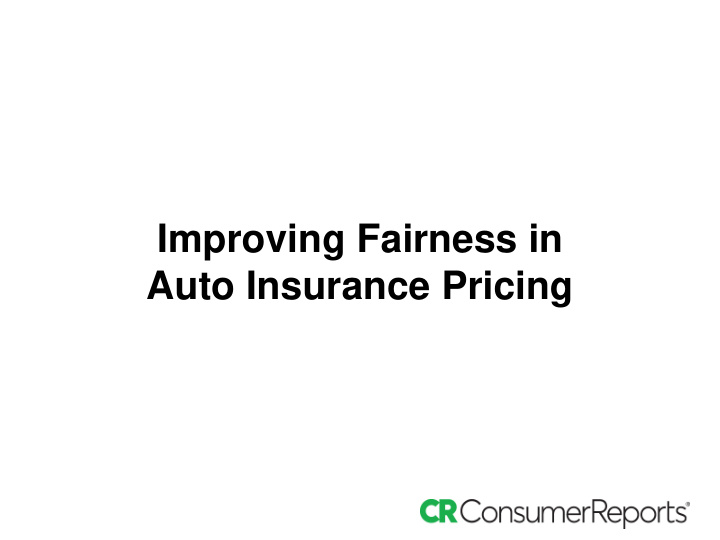



Improving Fairness in Auto Insurance Pricing
CR September 2015 Investigation • Obtained over 2 billion price quotes for 700 auto insurance companies, in all 33,419 US Zip Codes • Pricing based more on socio- economic factors than driving habits • Credit score is major factor in setting prices
CR September 2015 Investigation • In Washington, DC, a good driver with only “Good” Credit pays $239 more per year than a driver with “Excellent Credit” • A good driver with “Poor Credit” pays $1,534 more per year for auto insurance. • A good driver with “Poor Credit” even pays $742 more per year than a bad driver with a Driving While Intoxicated (DWI) Conviction , if that driver has “Excellent Credit.”
CR September 2015 Investigation • The Good Driver with “Poor Credit” pays a “penalty” for having poor credit ($1,534 more) that is twice as much as the “penalty” paid by the Bad Driver with the DWI Conviction ($792 more than the baseline) • It is patently unfair and unwise to let convicted drunk drivers pay LESS for their auto insurance than an excellent driver with poor credit. • This sends the wrong signal to drivers about how to conduct themselves and stay safe on the road.
April 2017 CR-ProPublica Investigation
April 2017 CR-ProPublica Investigation • Drivers living in predominantly minority urban neighborhoods are charged higher automobile insurance premiums on average than drivers with similar safety records in non-minority neighborhoods with comparable levels of risk • Examined 4 states that publish claims data by zip code (California, Illinois, Missouri and Texas) • In some cases, insurers such as Allstate, Geico, and Liberty Mutual charged premiums that were on average 30 percent higher in minority zip codes than in comparable non-minority neighborhoods.
NY DFS Issues Regulation to Restrict Use of Education & Occupation • Use of education and occupation ratings factors affected 60% of customers; • NY Department of Financial Services asked companies to justify the practice; no companies came forward to do so; • Adopted regulation in 2017 banning use of education and occupation as ratings factors; • Worked with insurers to encourage compliance; 6 month phase-in period; • 99% of market now in compliance.
Recommend
More recommend